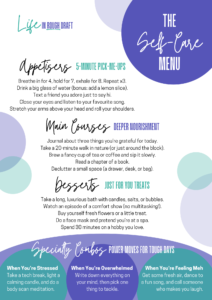
Important note:
This post addresses toxic relationships in a general sense and is not intended to cover situations involving family violence, abuse, or coercive control. If you’re in an unsafe or abusive environment, please reach out to a trusted professional or organisation in your area. In Australia, services like 1800RESPECT provide confidential support 24/7. Your safety is always the priority.
The realisation nobody warns you about
Ever had a moment when you’re halfway through a conversation and think, Why am I still putting up with this shiz?
Whether it’s a family member, an old friend, or someone you somehow inherited in your social circle, toxic relationships have a way of lingering far longer than they should.
You’re not a terrible person for wanting out. At some point, we all realise that not every relationship is worth the emotional cost.
It’s not selfish to prioritise yourself; it’s survival.
What makes a relationship toxic?
First, let’s clarify: toxic relationships aren’t just those where someone occasionally annoys you or gets on your nerves.
Toxic relationships are marked by consistent patterns of negativity, manipulation, or harm. These relationships often leave you feeling drained, anxious, or like you’re walking on eggshells.
How to identify toxic relationships: red flags to watch out for
Gaslighting: Your friend “jokes” about how you’re always the flaky one in the group, even though you’ve shown up for them countless times. When you call them out, they say, “You’re overreacting. I didn’t mean it like that.”
Guilt-tripping: Your sibling reminds you again how much they’ve done for you over the years, leaving you feeling obligated to drop everything and help them – even if it’s inconvenient or unreasonable.
Negativity overload: That colleague who never has a good word to say – about the boss, the workload, or the breakroom coffee – and somehow, every conversation leaves you drained and questioning your career choices.
Boundary smashing: You tell your sibling you can’t host Christmas this year, and they respond with, “Wow, I guess we’re not important to you anymore.”
If this sounds familiar, maybe it’s time to ask yourself: Why am I giving my energy to this relationship?
The guilt myth: loyalty ≠ obligation
We’ve all been there: But they’re my [insert title: parent, childhood friend, sibling, coworker].
Society loves to push the narrative that loyalty is the ultimate virtue – no matter the cost. “Family is forever,” they say. “Friends are for life.” These phrases sound lovely on a greeting card but can feel like handcuffs when you’re stuck in a toxic relationship.
Loyalty is not a blank cheque for someone to treat you poorly. Relationships, no matter how long-standing, should add to your life – not drain it.
Recognising guilt tactics in toxic relationships
Toxic relationships often hinge on guilt-tripping. Here’s what that can look like:
The Martyr: “After all I’ve done for you, this is how you repay me?”
The Victim: “Everyone leaves me. I thought you were different.”
Invalidating your choices: “You’re just being sensitive/selfish/mean.”
Fear of regret: “You’ll regret this when I’m gone.”
These tactics are designed to keep you in the relationship by convincing you that leaving would make you a “bad person.” But guilt is not love, and manipulation is not loyalty.
Setting boundaries to manage toxic relationships
When dealing with toxic people, boundaries are your best friend. Think of them as the sturdy fence between your peace of mind and someone else’s chaos.
How to set boundaries (and stick to them):
- Start small: Limit interactions or say no to minor requests.
- Be clear and kind: Use “I” statements like, “I feel overwhelmed when …”
- Prepare for pushback: Toxic people often test boundaries. Stand firm.
- Keep it simple: “No” is a complete sentence.
How to walk away from toxic relationships
Leaving toxic relationships can feel daunting, especially if they’ve been a part of your life for years. But staying isn’t the solution; it’s the problem.
Steps to remove yourself gracefully:
- Reduce contact gradually: If a clean break isn’t possible, limit interactions.
- Communicate with care: Say, “I’ve realised I need to focus on my mental health and need some space to do that.”
- Find your support system: Surround yourself with people who respect your growth.
- Stay strong: Toxic people often lash out when they lose control. Stand firm.
Life after toxicity
The beauty of letting go is the space it creates for what truly matters: genuine friendships, personal growth, and a sense of calm you forgot was possible.
Permission to prioritise yourself
You’re not obligated to maintain toxic relationships that harm your wellbeing. Walking away isn’t selfish – it’s self-preservation.
As the saying goes, “You can’t pour from an empty cup.” So fill yours with peace, joy, and people who make your life brighter.
Overwhelmed and unsure how to recharge?
Say “hello” to your Self-Care Menu!
Exhausted? Burnt out? Running on fumes and cold coffee?
It’s time for a little TLC, my friend.
Sign up for my emails and get The Self-Care Menu – a smorgasbord of simple, soul-soothing practices designed to help you refuel before you snap at your next Zoom meeting.

